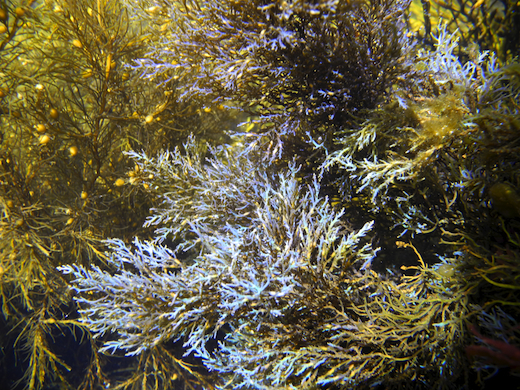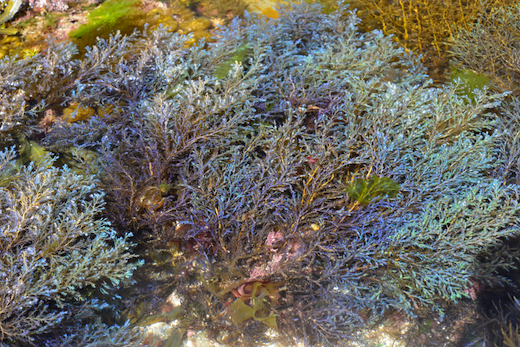Cystoseira nodicaulis (Withering) M.Roberts

Description: Thallus to 1 m long, usually solitary, attached by a irregular conical disc. Axis cylindrical, usually branched, with smooth, rounded apex immersed between bases or tophules of developing laterals. Lateral branch systems (below) radial or distichous, with greenish-blue iridescence when first formed, about 50 cm long, repeatedly branched in a pinnate manner, either regularly or irregularly, with infrequent cryptostomata and bearing spine-like appendages; deciduous in summer; first-formed laterals of the season with tophules, later without. Tophules ovoid, to 15 mm long, smooth or covered with small tubercles, persistent on axis after rest of lateral has been shed. Receptacles formed in the ultimate branchlets, simple or branched, nodose, usually bearing spine-like appendages. Air vesicles inconspicuous, dilations of ultimate branchlets, solitary, in series or confluent; sometimes absent.
Habitat: Found in large intertidal rock pools and lagoons, often with Cystoseira tamariscifolia and Cystoseira baccata (which can be seen in the background of the above picture), where it can be a colourful addition to the flora; and in the shallow subtidal.
Distribution: Southern and western shores of Britain and Ireland, north to the Argyll in Scotland; Atlantic France and Spain, Portugal, Canary Is., Morocco, south to Mauritania.

.jpg)
Photographs © M.D. Guiry





